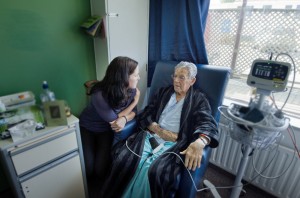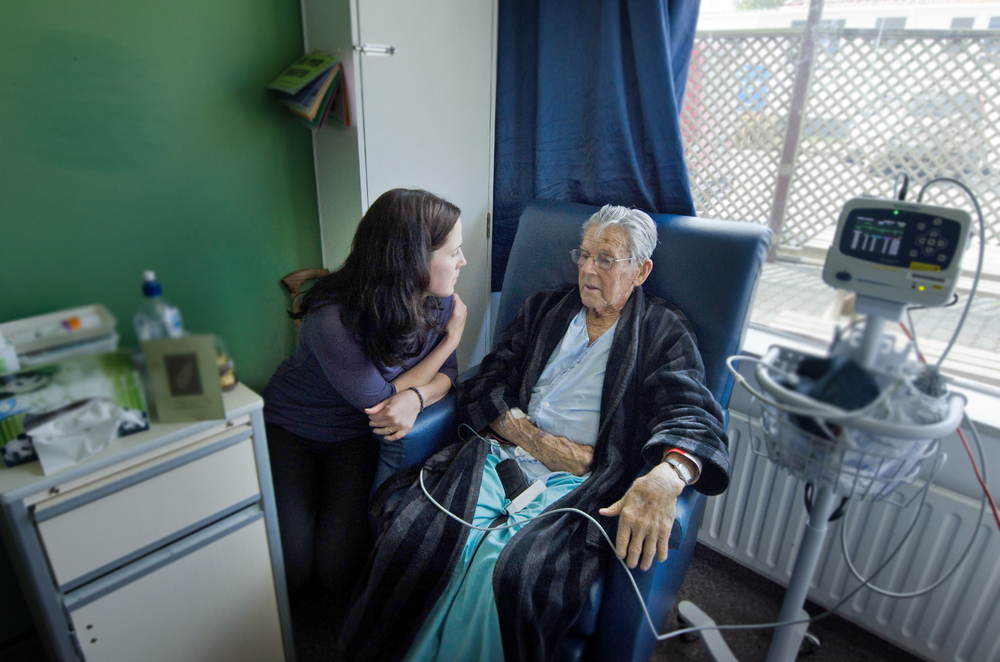 When men are diagnosed with prostate cancer and have a life expectancy of less than 10 years, national guidelines recommend “watchful waiting” instead of treatment, as patients are unlikely to see added benefits from aggressive treatment, such as radiation or surgery, within 10 years. Regardless of these guidelines, a study from the University of California, Los Angeles, shows that more than half of men with a low life expectancy are treated with radiation therapy.
When men are diagnosed with prostate cancer and have a life expectancy of less than 10 years, national guidelines recommend “watchful waiting” instead of treatment, as patients are unlikely to see added benefits from aggressive treatment, such as radiation or surgery, within 10 years. Regardless of these guidelines, a study from the University of California, Los Angeles, shows that more than half of men with a low life expectancy are treated with radiation therapy.
Dr. Timothy Daskivich led the research effort, which involved analyzing health histories of over 96,000 men diagnosed with early-stage prostate cancer and listed in the Surveillance, Epidemiology, and End Results-Medicare database. Approximately half of the men had life expectancies less than 10 years, and the majority were treated with surgery, radiation, or brachytherapy. This may be problematic, as aggressive treatments can lead to poorer quality of life.
“Life expectancy is poorly integrated into treatment decision-making for prostate cancer, yet it is one of the primary determinants of whether a patient will benefit from treatment with surgery or radiation,” said Dr. Daskivich in a news release from UCLA. “Because these treatments have side effects such as erectile dysfunction, urinary incontinence, and bowel problems, it is crucial for men with limited life expectancies to avoid unnecessary treatment for low- and intermediate-risk prostate cancer.”
The one exception was men 80 years and older, of whom 24% were treated aggressively. Men between the ages of 66 and 69 years were treated aggressively 68% of the time, men between the ages of 70 and 74 were treated aggressively 69% of the time, and men between the ages of 75 and 79 were treated aggressively 57% of the time, predominantly by radiation.
“Describing treatment trends by both age and health status is key, because younger, sicker men may have life expectancies of less than 10 years, while older, healthier men may have life expectancies longer than 10 years,” noted Dr. Daskivich. “This information will help men with newly diagnosed low- and intermediate-risk prostate cancer understand their likelihood of living long enough to benefit from aggressive treatment. It will also raise awareness among clinicians that a large number of men older than 65 are at risk for having life expectancies of less than 10 years.”
The team hopes to “promote integration of this information into treatment decision-making discussions,” according to Dr. Daskivich. They are now working to determine if the trend of overtreatment continued from the end of the time period of interest (2007) to today.
The article, “Variation in Treatment Associated with Life Expectancy in a Population-based Cohort of Men with Early-stage Prostate Cancer,” was published in Cancer and was a featured cover article. It was accompanied by another article, “Overtreatment of Men with Early-stage Prostate Cancer and Limited Life Expectancy,” which provided commentary on Dr. Daskivich’s article.

